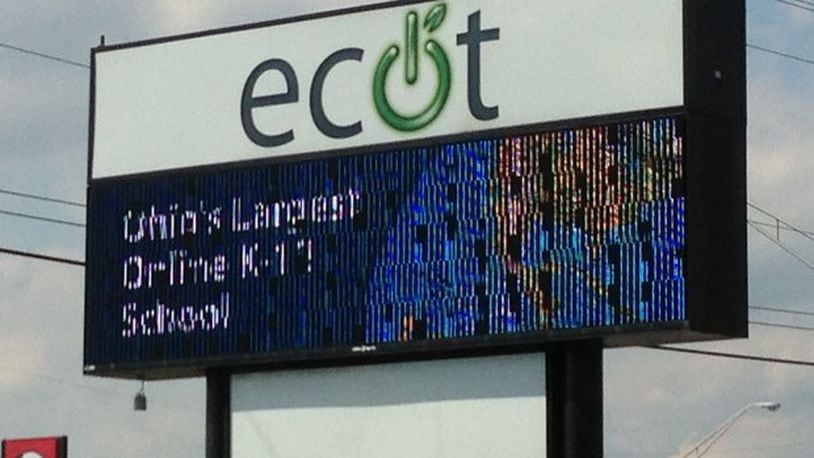The Electronic Classroom of Tomorrow (ECOT) has been beset with problems, ranging from a high dropout rate to alleged inaccuracies in reporting enrollment.
ECOT claimed more than 15,000 students two years ago, but a state review of student log-in data put the school’s enrollment at just over 6,000. The state is clawing back more than $60 million in state funding from ECOT, and the school now hopes to rebrand itself as a “dropout recovery” school serving students 16 and over, according to the Columbus Dispatch.
RELATED: State to audit online schools for accountability
ECOT officials did not respond to requests for comment.
Online schools have many supporters, and for a decade the sector underwent rapid expansion, with a peak enrollment of 40,626 in 2013-14, according to the Ohio Department of Education. But since then, it has declined each year — to 39,284, then 38,020, then sharply down to 33,503 last year.
Spokeswoman Brittany Halpin said ODE has not analyzed the reason for the drop, though a check with local districts found many have greatly increased their online offerings.
RELATED: Parents have many choices in school market
ODE is finishing 2016-17 enrollment reviews for more than 100 charter schools, including 20 online schools, where students’ participation time will be checked, Halpin said.
Because of concerns about oversight of online-only schools, the legislature in 2015 passed Ohio House Bill 2, which put a series of new standards and reporting requirements in place.
“We’re definitely in a period of transition,” said State Senate Education Chair Peggy Lehner, R-Kettering. “There were an awful lot of abuses of the system the way it was. House Bill 2 was designed to correct some of the more egregious issues we saw. As with any change applying to multiple different models, those changes are working well in some cases, and perhaps not so well in others.”
RELATED: State withholds even more money from ECOT
According to ODE data, about 3,800 students in the Dayton area attended purely online schools in 2016-17, ranging from the largest — ECOT — to more than a dozen smaller schools.
| E-school enrollment declines in Ohio | |
|---|---|
| Year | E-school enrollment |
| 2008-09 | 24,370 |
| 2013-14 | 40,626 |
| 2014-15 | 39,284 |
| 2015-16 | 38,020 |
| 2016-17 | 33,503 |
| Note: This does not include students doing online work at traditional schools | |
| Source: Ohio Department of Education | |
That local online enrollment of 3,800 is larger than two-thirds of the traditional school districts in the area — larger than Vandalia-Butler, Tecumseh or Talawanda, for example. And the number doesn’t count the hundreds of students who participate in some type of online education within their own regular public school.
Advocates say e-schools aren’t for everyone, but they provide an alternative for students who work best outside of a classroom.
RELATED: Key senator opposes school voucher expansion
“I think families really want the flexibility,” said Marie Hanna, superintendent of Ohio Connections Academy, a statewide online charter school that serves about 3,500 students, including hundreds in the Dayton area. “Flexibility in daily schedule, flexibility in learning style and pace. … If they’re at home, they can do that.”
In Ohio, online schools are charter schools, overseen by a sponsor and often run by a management company. Students complete structured online lessons in regular academic subjects at home, monitored by teachers. Students take the same state tests as students in traditional public schools.
Hanna said Ohio Connections Academy has always tracked student attendance and work, but added that the state’s new standards have required officials to add new tools and data reporting. She said there’s always a challenge in accurately reporting work that’s done both online and offline.
RELATED: Open enrollment policies divide local schools
“Teachers are having to vet things even more thoroughly than in the past,” Hanna said. “So, we can’t be sure that the child spent 1.5 hours reading a book as reported, but the teacher can vet that the tests and the portfolio work — research papers or projects – were done with good quality (to verify that).”
Ohio Connections’ state performance index of 80 last year was just behind Fairborn and ahead of Huber Heights. Its four-year graduation rate of 72 percent was behind all local districts, but ahead of ECOT and many other online schools.
Hanna cited student turnover at online schools as a factor there, saying the graduation rate for students who stay there for all four years of high school is 92 percent.
RELATED: Area wins $3.4M in grants for after-school programs
“We’re getting more questions in regard to the situation with ECOT,” she said. “But we always had a lot of questions, because responsible people who are choosing a school for their child, we would hope would ask a lot of questions. … We want to work with families who are engaged.”
About the Author
